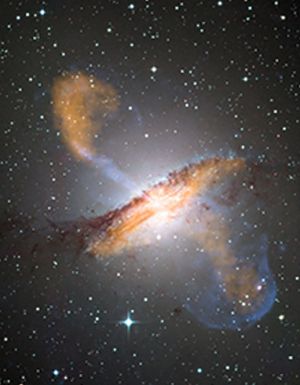NASA’s Chandra Spacecraft Locates Small Black Hole
By Space Coast Daily // November 10, 2013
55 Million years From Earth
ABOVE VIDEO: The NASA Chandra X-Ray Observatory is being used to investigate Black Holes in our home galaxy (the Milky Way) and beyond. (VIDEO: AstronomySquared)
BREVARD COUNTY • KENNEDY SPACE CENTER, FLORIDA – Astronomers have discovered a small supermassive black hole in a spiral galaxy while using NASA’s Chandra X-Ray space telescope.

The new black hole was found in spiral galaxy NGC 4178 some 55 million light-years from Earth.
Its mass is estimated to be less than about 200,000 times of our sun, ranking it on the low-mass end of the supermassive black hole scale.
In reviewing properties from images captured by the Chandra telescopes, astronomers from George Mason University in Virginia believe this new black hole is quickly gobbling up material surrounding it.
NASA’s Chandra X-ray Observatory is a telescope specially designed to detect X-ray emission from very hot regions of the Universe such as exploded stars, clusters of galaxies, and matter around black holes.

Because X-rays are absorbed by Earth’s atmosphere, Chandra must orbit above it, up to an altitude of 86,500 miles in space. The Smithsonian’s Astrophysical Observatory in Cambridge, Mass., hosts the Chandra X-ray Center which operates the satellite.
VERY DETAILED IMAGES
Chandra carries four very sensitive mirrors nested inside each other. The energetic X-rays strike the insides of the hollow shells and are focussed onto electronic detectors at the end of the 30-foot optical bench.
Depending on which detector is used, very detailed images or spectra of the cosmic source can be made and analyzed.
GLOWING REMAINS OF EXPLODED STARS
Chandra has imaged the spectacular, glowing remains of exploded stars, and taken spectra showing the dispersal of elements.
As its mission continues, Chandra will continue to discover startling new science about our high-energy Universe.
Chandra has observed the region around the supermassive black hole in the center of our Milky Way, and found black holes across the universe, like this latest discovery.
Chandra has traced the separation of dark matter from normal matter in the collision of galaxies in a cluster and is contributing to both dark matter and dark energy studies. As its mission continues, Chandra will continue to discover startling new science about our high-energy Universe.
NASA’s Chandra X-ray Observatory, which was launched and deployed by Space Shuttle Columbia on July 23, 1999 and is managed by NASA’s Marshall Space Flight Center.












